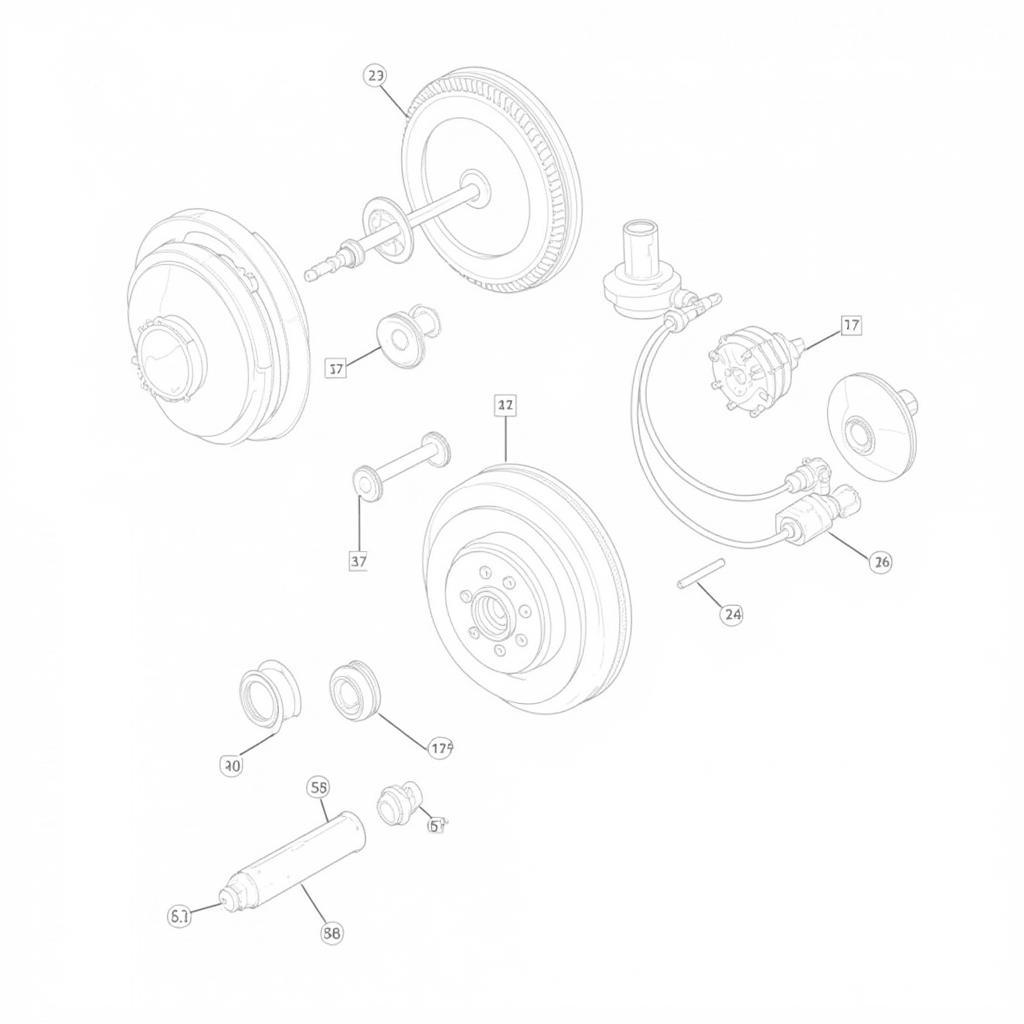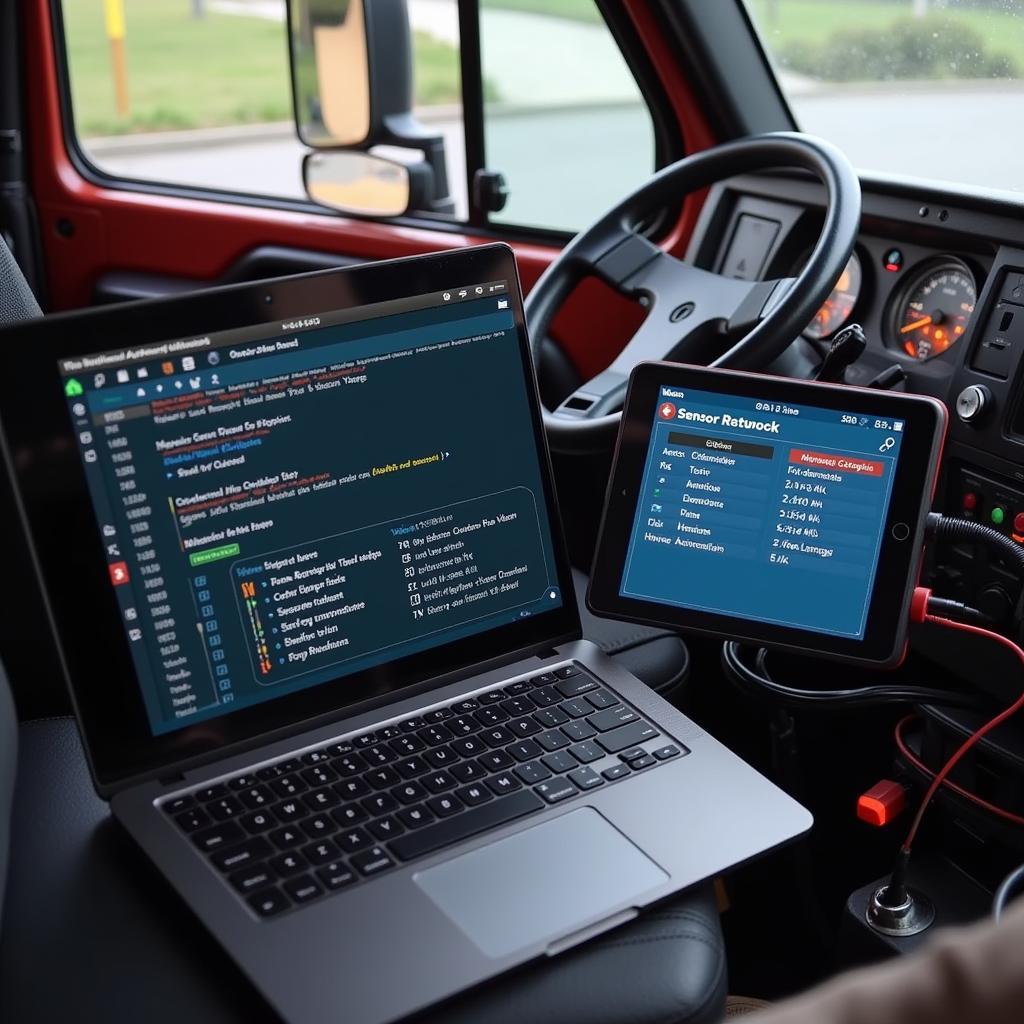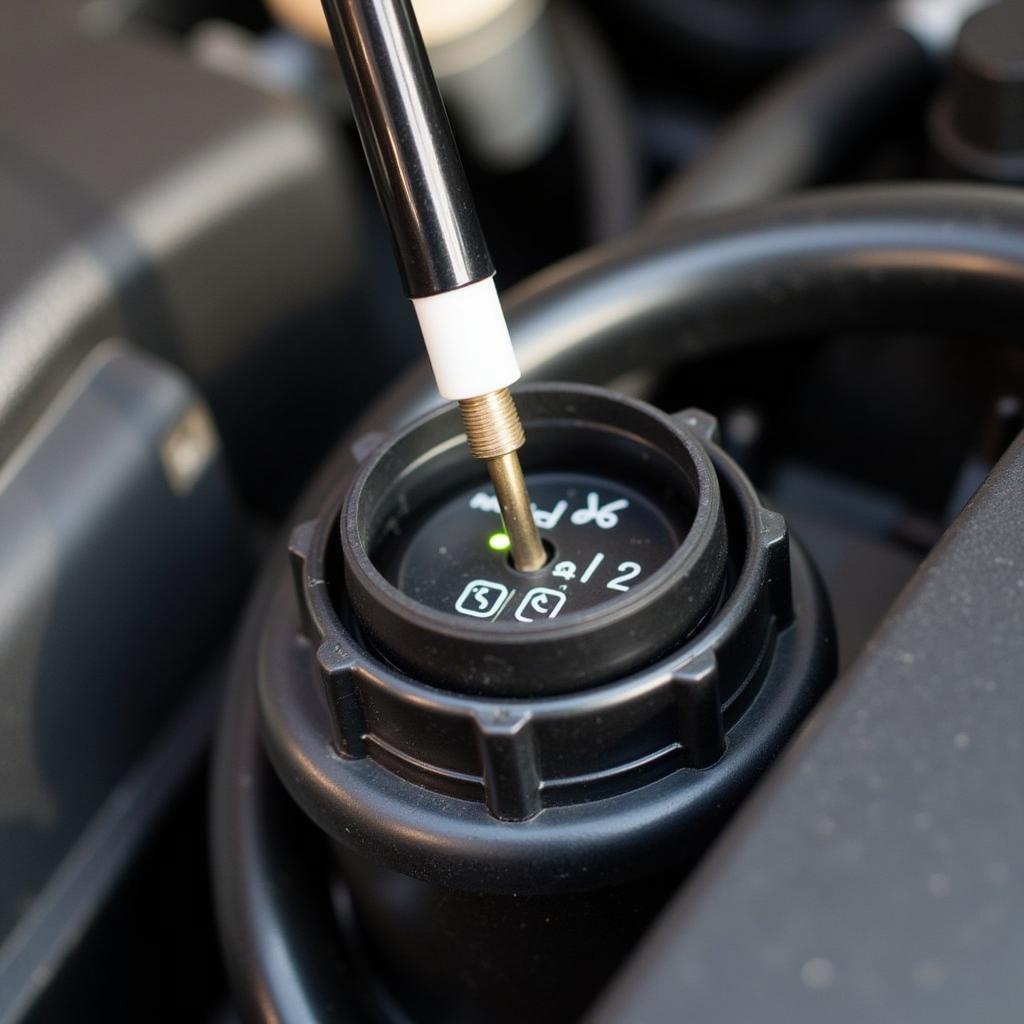The dreaded international 4300 brake pressure warning can bring your workday to a screeching halt. This article provides expert advice and troubleshooting steps to help you diagnose and address the issue, getting you back on the road quickly and safely. We’ll cover common causes, diagnostic procedures, and even remote software solutions that can be implemented to rectify certain problems.
If you’re experiencing a brake pressure warning light on your International 4300, understanding the underlying causes is crucial for effective troubleshooting. Low brake fluid, air in the brake lines, worn brake pads or shoes, and faulty sensors are among the most common culprits. Ignoring this warning could lead to serious safety risks, so prompt action is essential. For specific information on 2007 models, check out this helpful resource: 2007 international 4300 brake pressure warning light.
Understanding the International 4300 Brake System
The International 4300 brake system is a complex network of components working together to ensure safe and reliable stopping power. From the master cylinder to the wheel cylinders and everything in between, a problem in any part of the system can trigger the brake pressure warning. Understanding these components and their interactions is key to effective diagnosis.
Common Causes of the Brake Pressure Warning
There are several potential reasons why your International 4300 might display a brake pressure warning light. Here’s a breakdown of some of the most common culprits:
- Low Brake Fluid: This is often the easiest fix. A leak in the brake lines, worn seals in the master cylinder, or even worn brake pads can cause low brake fluid levels.
- Air in the Brake Lines: Air in the brake lines can compress, leading to a spongy brake pedal and reduced braking efficiency. This can occur after brake work or if there’s a leak in the system.
- Worn Brake Pads or Shoes: Worn brake components require more fluid to engage, potentially triggering the warning light.
- Faulty Brake Pressure Sensor: A malfunctioning sensor can provide inaccurate readings, illuminating the warning light even if the brake pressure is adequate.
- Issues with the ABS System: Problems within the Anti-lock Braking System (ABS), such as a faulty wheel speed sensor or ABS module, can sometimes trigger the brake pressure warning light.
 International 4300 Brake System Diagram
International 4300 Brake System Diagram
Diagnosing the Problem
Diagnosing the root cause of the international 4300 brake pressure warning requires a systematic approach. Start by visually inspecting the brake system for any obvious leaks or damage. Check the brake fluid level in the master cylinder reservoir. If it’s low, top it off and monitor for further drops. If the fluid level continues to decrease, you likely have a leak that needs to be addressed. A spongy brake pedal often indicates air in the brake lines, requiring bleeding the system.
Using Diagnostic Tools and Software
Modern diagnostic tools and software can significantly aid in troubleshooting complex brake system issues. These tools can read fault codes stored in the vehicle’s computer, pinpoint the source of the problem, and even allow for remote software updates and calibrations. For issues related to the brake pressure warning light on a 2006 International 4300, refer to: brake pressure warning light 06 international 4300.
 Diagnostic Software Interface for International 4300
Diagnostic Software Interface for International 4300
“Using advanced diagnostic software can significantly reduce troubleshooting time and ensure accurate repairs,” says John Smith, Senior Automotive Diagnostic Technician at Acme Truck Repair. “These tools allow us to pinpoint the exact issue quickly and efficiently.”
Implementing Solutions
Once you’ve identified the cause of the international 4300 brake pressure warning, you can implement the appropriate solution. This may involve repairing or replacing faulty components, bleeding the brake lines, or updating the vehicle’s software. In some cases, remote programming and software installations can address certain issues without requiring a physical visit to a repair shop.
Remote Programming and Software Solutions
Remote diagnostics and software updates offer a convenient and efficient way to address certain brake system problems. This involves connecting the vehicle to a specialized diagnostic tool that communicates with the manufacturer’s servers, allowing technicians to remotely diagnose issues, install software updates, and even calibrate certain components.
“Remote programming offers significant advantages in terms of time and cost savings,” adds Maria Garcia, Lead Software Engineer at Global Automotive Solutions. “It allows us to quickly resolve software-related issues without requiring the vehicle to be physically brought to a service center.”
 Remote Programming of International 4300
Remote Programming of International 4300
Conclusion
Addressing the international 4300 brake pressure warning is crucial for maintaining safe and reliable operation. By understanding the common causes, using proper diagnostic techniques, and utilizing modern software solutions, you can quickly get your International 4300 back on the road. Remember, ignoring this warning could have serious consequences, so address it promptly and thoroughly.
FAQ
- What does the international 4300 brake pressure warning light indicate? It signals a potential problem with the brake system, such as low fluid, air in the lines, or worn components.
- What should I do if my brake pressure warning light comes on? Pull over safely and check your brake fluid level. If it’s low, top it off and have the system inspected.
- Can I drive my International 4300 with the brake pressure warning light on? It’s highly discouraged. Driving with a brake problem could lead to brake failure.
- How often should I check my brake fluid level? At least once a month, and more frequently if you notice any changes in brake performance.
- What is involved in bleeding the brakes on an International 4300? This process involves removing air from the brake lines using specialized tools and procedures.
- Can remote programming fix my brake pressure warning light? It can if the problem is software-related.
- How much does it typically cost to repair a brake pressure issue on an International 4300? The cost varies depending on the specific problem and labor rates.

